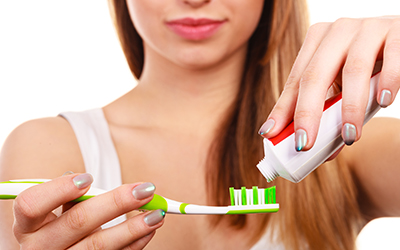At Meadows Family Dentistry in Castle Rock, we are dedicated to helping you and your family maintain healthy, beautiful smiles. One of the most effective preventive treatments we offer is dental sealants. This quick and painless solution provides long-lasting protection against cavities, making it a vital part of dental care in Castle Rock.
What Are Dental Sealants?
Dental sealants are thin, protective coatings painted onto the chewing surfaces of back teeth, such as molars and premolars. These areas are prone to accumulating plaque and food particles due to their grooves and depressions, which can be difficult to clean with brushing and flossing alone. Sealants act as a barrier, "sealing out" harmful substances and preventing decay.
Benefits of Dental Sealants:
- Protect teeth from cavities and decay.
- Reduce the need for future fillings or repairs.
- Provide a safe, painless, and cost-effective preventive solution.
Our local dentists and team recommend sealants as part of a comprehensive approach to family dental care.
Dental sealants are an excellent choice for both children and adults, depending on their dental health needs.
Sealants for Children: Children and teenagers are at a higher risk of developing cavities due to their eating habits and difficulty cleaning hard-to-reach areas. Sealants are particularly beneficial for:
- Permanent molars and premolars as soon as they erupt (ages 6-14).
- Baby teeth with deep grooves or depressions that need extra protection.
By applying sealants early, we can help safeguard your child’s smile during their cavity-prone years.
Sealants for Adults: Adults without fillings or decay in their molars can also benefit from sealants. This preventive treatment is especially helpful for those with deep grooves in their back teeth or a history of frequent cavities.
Applying dental sealants is a simple, painless process that takes just a few minutes per tooth at our Castle Rock dental office. Here’s how it works:
- Cleaning the Teeth: The dentist or hygienist thoroughly cleans the teeth to remove plaque and debris.
- Drying and Isolation: The teeth are dried, and absorbent materials are placed around them to keep the area dry.
- Preparing the Surface: An acid solution is applied to roughen the tooth’s surface, ensuring a strong bond with the sealant.
- Applying the Sealant: The sealant is painted onto the enamel, bonding directly to the tooth.
- Hardening the Sealant: A special curing light is often used to help the sealant harden quickly.
Once applied, sealants provide a durable layer of protection that can last for years with proper care.
While brushing and flossing are essential for maintaining good oral hygiene, they may not always reach the deep grooves of molars and premolars. Sealants offer an additional layer of defense, reducing the risk of decay and the need for restorative treatments like fillings.
Regular check-ups at our Castle Rock dental office allow us to monitor the condition of your sealants and reapply them as needed.
Preventive Dentistry for the Whole Family
At Meadows Family Dentistry, we prioritize family dental care and offer a range of preventive treatments, including:
- Pediatric Dental Care: Gentle, age-appropriate care for young patients.
- Dental Hygiene Services: Professional cleanings to complement at-home care.
- Cavity Prevention Treatments: Fluoride treatments and sealants to protect teeth.
By combining dental sealants with other preventive measures, we help patients of all ages maintain strong, healthy smiles.
FAQs About Dental Sealants
No, the application process is completely painless and requires no drilling or anesthesia.
Sealants can last up to 10 years with proper care, though regular dental visits are important to ensure they remain intact.
No, adults can benefit from sealants too, especially if their teeth have deep grooves and no existing decay or fillings.
Schedule Your Sealant Appointment Today
Protect your teeth from cavities with dental sealants at Meadows Family Dentistry. Whether you’re seeking preventive care for your child or added protection for yourself, our local dentists are here to provide expert guidance and treatment. Visit our Castle Rock dental office today and take the next step toward a healthier, more confident smile.

















 (303) 660-5576
(303) 660-5576 smile@meadowsfamilydentistry.com
smile@meadowsfamilydentistry.com 3740 Dacoro Lane, Suite #115
3740 Dacoro Lane, Suite #115